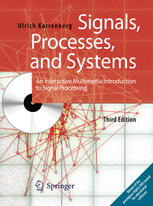

Most ebook files are in PDF format, so you can easily read them using various software such as Foxit Reader or directly on the Google Chrome browser.
Some ebook files are released by publishers in other formats such as .awz, .mobi, .epub, .fb2, etc. You may need to install specific software to read these formats on mobile/PC, such as Calibre.
Please read the tutorial at this link: https://ebookbell.com/faq
We offer FREE conversion to the popular formats you request; however, this may take some time. Therefore, right after payment, please email us, and we will try to provide the service as quickly as possible.
For some exceptional file formats or broken links (if any), please refrain from opening any disputes. Instead, email us first, and we will try to assist within a maximum of 6 hours.
EbookBell Team

4.8
64 reviewsThis is a very new concept for learning Signal Processing, not only from the physically-based scientific fundamentals, but also from the didactic perspective, based on modern results of brain research. The textbook together with the DVD form a learning system that provides investigative studies and enables the reader to interactively visualize even complex processes. The unique didactic concept is built on visualizing signals and processes on the one hand, and on graphical programming of signal processing systems on the other. The concept has been designed especially for microelectronics, computer technology and communication. The book allows to develop, modify, and optimize useful applications using DasyLab - a professional and globally supported software for metrology and control engineering. With the 3rd edition, the software is also suitable for 64 bit systems running on Windows 7. Real signals can be acquired, processed and played on the sound card of your computer. The book provides more than 200 pre-programmed signal engineering systems and design transparencies. Numerous introduction-videos, one for every chapter, and more than 250 high-quality figures come along with the learning system, as well as a visualization of all the "living" experiments and their results. With this learning system, readers can now make use of "equipment" and software. The new, 3rd edition many improvements, corrections and smaller additions, and a new chapter new chapter presenting a clear introduction to mathematical modeling of signals, processes, and systems.